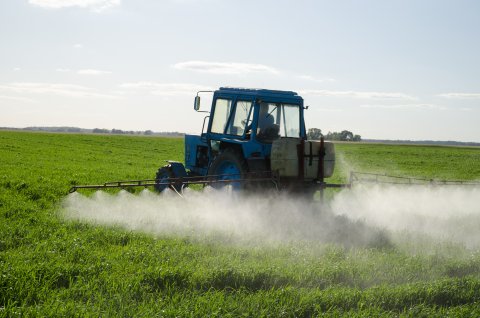
Legacy Pesticides in Fish and Shellfish
What are legacy pesticides?
- Legacy pesticides were once widely used in agriculture and home pest control.
- Today, legacy pesticides are banned in the United States due to their harmful effects (though they may still be used in other countries).
- However, legacy pesticides persist in the environment, and can accumulate in fish and shellfish.
- Legacy pesticides include chemicals like DDT (dichlorodiphenyltrichloroethane) and related compounds, dieldrin, chlordane, and toxaphene.
- Only a few California water bodies have fish with significant levels of these chemicals.
What is the health concern for humans?
- High levels of legacy pesticides may:
- affect the developing fetus, possibly leading to later changes in learning and behavior.
- have effects on reproduction, such as decreased fertility.
- increase cancer risk.
- Women can pass legacy pesticides on to their babies when pregnant and breastfeeding.
Should I still eat fish?
- Yes! Low-contaminant fish are an important part of a healthy, well-balanced diet.
- Fish are a good source of protein, vitamins, and heart-healthy omega-3 fatty acids.
- Eating two servings of fish per week is good for you, according to the American Heart Association.
- If you are pregnant, eating low-contaminant fish may help your baby’s brain develop.
If legacy pesticides are present, which fish pose the greatest risk?
- Fatty fish, bottom feeders, and fish that eat other fish.
- Larger and older fish.
How can I reduce my risk?
- If you catch your own fish, follow the Office of Environmental Health Hazard Assessment’s (OEHHA) fish advisories for California water bodies.
- Keep in mind that legacy pesticides accumulate in the skin, fat, and some internal organs of fish or shellfish.
- Trim the fat, remove the skin, and fillet the fish before cooking. Eat only the skinless fillet (meat).
- For crab and lobster, remove the internal organs (“guts,” “butter,” or “tomalley”) and rinse out the body cavity before cooking.
- Bake or grill fish in a way that lets the juices drain away. Throw away the cooking juices.
- Boil or steam crab and lobster, and discard the cooking liquid.
- Do not use the fat, skin, organs, juices, or the whole fish or shellfish, in soups and stews.
Where can I learn more?
- ToxFAQs™ - Aldrin and Dieldrin (ATSDR)
- ToxFAQs™ - Chlordane (ATSDR)
- ToxFAQs™ - DDT, DDE, and DDD (ATSDR)
- ToxFAQs™ - Toxaphene (ATSDR)
Documents
Fish, Incident Response, Seafood Safety, and Harmful Algal Bloom Section
Sacramento Office
1001 I Street
Sacramento, CA 95814
Phone: (916) 324-7572
Fish@oehha.ca.gov


